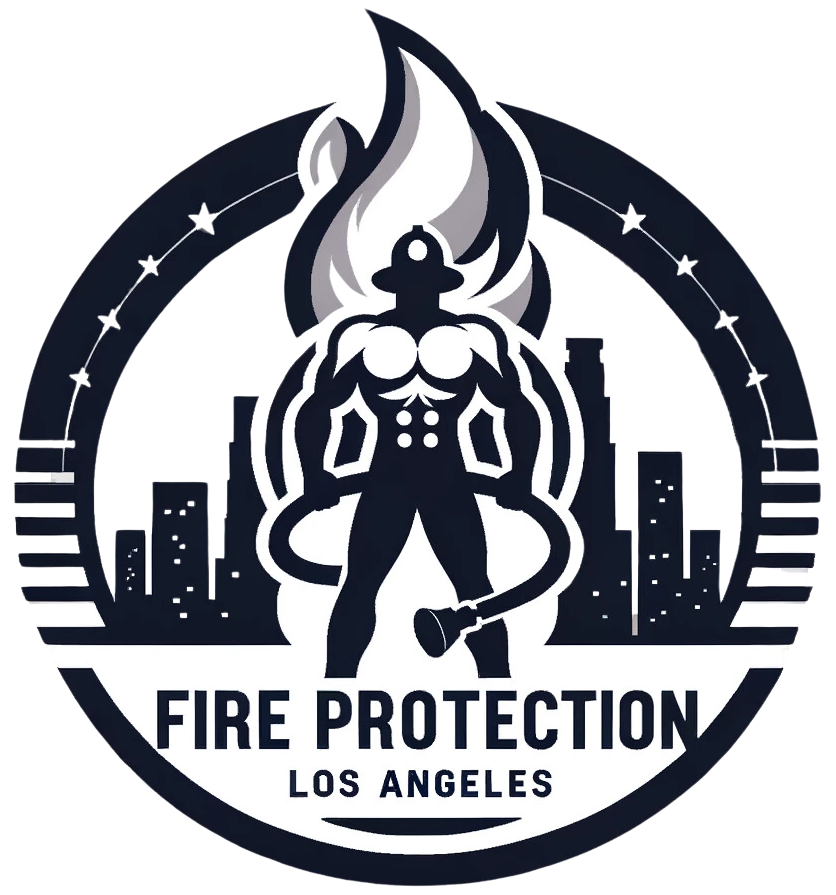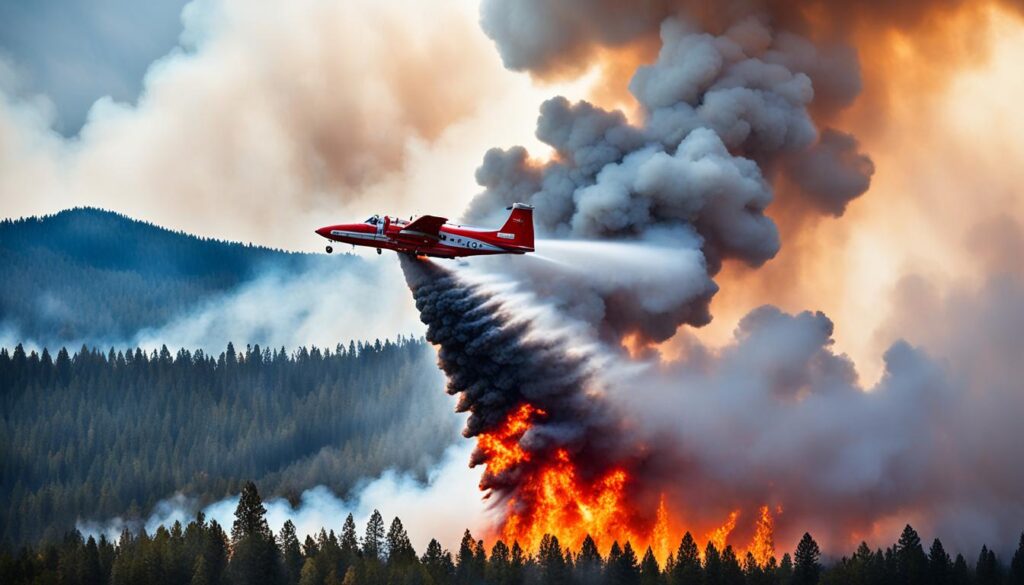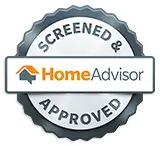Nature’s power is huge, and we often forget that. But, nature won’t be ignored, especially when we see nearly 1,000 aircraft fighting fires each year. The U.S. Forest Service and Bureau of Land Management spend over $250 million on this effort. This shows how important aerial firefighting is.
Stopping wildfires needs the latest technology and smart use of different planes. Imagine the Boeing 747, the Global Supertanker, flying high to drop 19,600 gallons of fire retardant. Or the Bombardier CL-415, scooping water from lakes to fight fires. These planes, along with others, are key in fighting wildfires.
Think about the skill needed for planes like the Q400 and Q300 to fight fires. These planes are not just for carrying people anymore. They are now key in fighting fires. This is clear when you know hundreds were saved from fires in California this year.
These planes fly over fires, dropping retardant and sending smokejumpers to hard places. They show how smart we can be against nature’s fires. With new tech and training for night fighting, these tactics are getting better and safer.
The numbers are huge, from the 74,200 liters the Global Supertanker can carry to Smokejumper Aircraft flying at 269 mph. What’s amazing is how well people, planes, and missions work together. This teamwork, with top-notch supervision and safety gear, is changing how we fight against fires.
Aerial Firefighting Technology and Airborne Assets
Aerial firefighting technology and airborne assets are key in fighting wildfires. This section looks at different aircraft and methods used in fighting fires. It highlights their special skills and how important they are in controlling wildfires.
Introduction to Aerial Firefighting Aircraft Types
Aerial firefighting planes vary, each with its own job in fighting wildfires. SEAT aircraft, like the Air Tractor AT-802, are great for quickly attacking small fires. On the other hand, big planes like the Boeing 747 Supertanker and the DC-10 Air Carrier can drop a lot of fire retardant over large areas, helping stop big fires from spreading.
The Role of SEATs in Initial Attack Operations
SEATs are key in starting to fight wildfires. They quickly drop fire retardant on fires to stop them from getting bigger. They can fly over tough terrain, making them very useful in fighting fires in hard-to-reach places.
Capabilities and Use of Large and Very Large Airtankers
When fires get really big, we need Large and Very Large Airtankers (LATs and VLATs). The Boeing 747 Supertanker can carry over 19,000 gallons of retardant, which is crucial for fighting big fires. These planes help ground crews by giving them the support they need to fight fires more effectively.
Water Scooping Aircraft and Their Tactical Advantages
Water scooping aircraft, such as the Bombardier CL-415, have special benefits in fighting fires. They can scoop up to 1,600 gallons of water fast and keep dropping it on the fire. This helps stop the fire from spreading by providing constant support from the air.
Advanced Smokejumper Deployment for Remote Wildfires
Smokejumper aircraft help fight fires in hard-to-reach places. They can quickly send in teams of skilled firefighters. This can stop a fire from getting worse and save a lot of damage, making smokejumpers very important in fighting fires.
Coordinating Air Attacks: The Importance of Aerial Supervision Modules
Aerial supervision modules are key to planning air attacks. They are run by experts who make sure planes and ground teams work together well. This helps make sure fires are fought as effectively as possible.
Learning about the different roles and skills of these flying assets shows how complex and advanced modern aerial firefighting is. As firefighting gets more complex, using new technologies and planes is vital for fighting more and bigger fires around the world.
Aerial Firefighting Tactics and Equipment
Effective aerial firefighting uses precision, advanced tech, and teamwork to fight wildfires. Suppliers give the tools needed for this. They provide fixed-wing aircraft and helicopters with special gear for fighting fires.
Helicopters use buckets and tanks to drop water or foam on fires from above. This helps fight flare-ups fast. Fixed-wing aircraft, like the Dash 8 Q Series, are key for dropping fire retardant to stop fires from spreading.
- Safety and Effectiveness: Aerial firefighting needs careful training and clear communication. Pilots and ground teams work together to avoid dangers and make sure drops are effective.
- Innovative Technologies: Drones have changed firefighting a lot. They use thermal imaging to find hotspots and help manned aircraft drop water or retardant accurately. Drones are cheaper and cover big areas fast, helping teams make quick decisions.
Aerial firefighting has risks, like flying in tough conditions. Using the latest helicopter tactics and both helicopters and fixed-wing planes helps teams work better and safer.
As we use more advanced tech like drones, aerial and ground teams will work better together. This will make firefighting more effective and protect communities from wildfires.
Conclusion
Looking at aerial firefighting today, we see how important it is to use many strategies and special gear. These things help fight wildfires well. The mix of new tactics and the bravery of firefighters makes fighting fires better and faster.
Before the fire season starts, pilots and their teams go through a lot of training. This training focuses on skills, health, and safety. Working together with groups like the Texas Forest Service shows how important it is to work well together in different places and situations.
New tech like the Hydrop system is changing how we fight fires from the air. It lets us work better at night and makes flying safer. Using big planes like the Boeing 747 Supertanker and smaller ones like the Sikorsky S-70i Firehawk shows we have many ways to fight fires.
This variety is key for dealing with fires that are getting bigger but less common. It also helps with the growing costs of putting out fires.
Fighting fires from the air has its challenges, like waiting a long time for new gear and making the most of what we have. But, we’re moving forward. The use of self-flying planes like the Sikorsky Firehawk is bringing new ways to fight fires at night.
Keeping up with new ideas and research is vital. This helps us stay ahead of wildfires and protect people and nature from fires. It ensures firefighters have what they need to keep communities and nature safe from fires.










